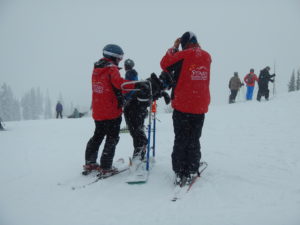I have been watching a programme on BBC2 Inventing the Impossible: the big life fix https://www.bbc.co.uk/programmes/b09g5hwf
The BBC bill it as “The UK’s leading inventors create ingenious new solutions to everyday problems and build life-changing solutions for people in desperate need”
All the people featured have a strong desire to achieve something but have a barrier to overcome. Here are a few examples:
Ian has Cerebral Palsy and wants to sail his own boat
Pollyanna is a lower limb amputee and wants to be a ballerina
Graham has a spinal cord injury and wants to snowboard again
Through inventive technology and engineering, The Big Life Fix team design and develop prototype inventions to create solutions. Once a created, the team refine the prototype into a workable result for the individual. Here are two examples that stood out to me:
Ian
Ian is a young man who has cerebral palsy and wants to sail. Sailing is something he used to do with his dad, until his dad passed away. Ian is not able to control the movement in his limbs. He can control his eyes and communicates using an eye gaze iPad. The team identify tech from other sectors, then repurpose it to create an eye gaze system that can steer the sailing boat. This allowed Ian to control the vessel.
Graham
Graham had a serious snowboarding accident which left him with a spinal cord injury and poor control over his limbs and balance. This is obviously crucial to snowboarding. He was desperate to get back into the mountains. The team engineered a solution to help him stand and shift his body weight and control the board. This reminded me of the snowboarder I had seen in Steamboat USA who had an adapted board https://www.positivepositioning.co.uk/blog/snowsports .
Also Darren ‘Swifty’ Swift, the snowboarder with an amazingly positive attitude I wrote about in this blog back in January https://www.positivepositioning.co.uk/blog/positive-points-attitude
People with disabilities have as much drive and ambition as anyone else. Their achievements mean that they have had to deal with barriers that able-bodied people may not even consider.
We can already see developments being made in snowsports and cycling which is brilliant. However, for the most part these solutions are the exception and not the rule. My hope is that this type of design and technology will become more widely available to help many other people who face extra challenges.



